UNV/106 - Splendors of Turkey
UNV/106 - Splendors of Turkey (9 Night / 10 Day)
Istanbul, Cappadocia, Pamukkale, Izmir (Ephesus), Canakkale, Troy, Istanbul
Duration : 9 Night / 10 Day
Departure days : The program starts from Istanbul on Thursdays. However, depending on
the arrival day it is possible to adjust the itinerary. It is important to mote
that guests must arrive in Ankara on Sunday morning.
Accommodation : Superior 4 star hotels
Istanbul Hotel President – 3+1 = 4 nights
Cappadocia Hotel Perissia – 2 night
Pamukkale Hotel Hierapark – 1 night
Izmir Kaya Prestige – 1 night
Canakkale Hotel Barbaros MD – 1 night
Meal Plan : 9 breakfasts + 7 lunches + 5 dinners as mentioned in the below itinerary
Domestic Flights : Istanbul/Ankara domestic flight is needed. This must be a morning flight
departing latest by 08:00am. This is only 55 minute flight.
Remarks :
- Depending on the availability, similar 4 star hotels may be used.
- The tour will be operated multilingual basis. In some cases the some guide speaks two languages and in some cases there may be two guides in the bus.
- For all tour departures, guests will be picked up from their hotels and at the end of the program they will be dropped off back to their hotels.
- Duration of each day is mentioned in below itinerary.
- Year around guaranteed departure program with minimum of 6 guests required.
- Beverages during the meals are not included.
|
Day 1 – Arrival in Istanbul |
Arrival in Istanbul and transfer to the hotel.
The remaining of the day is at leisure.
|
Day 2 – Istanbul; City Sightseeing |
Start a leisurely day, drive to pier in Eminonu area for a short visit to historical Spice Market (Egyptian Bazaar). This bazaar was built in 1664 as a part of Yeni Mosque complex situated nearby and named Egyptian Bazaar because spices and herbs brought from or via Egypt were sold in it.
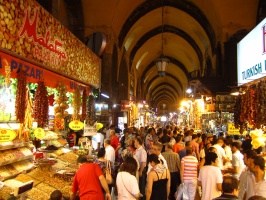
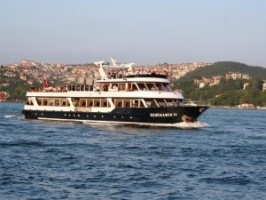
Then, board a private boat for the cruise along the Bosphorus, a narrow strait between the continents of Europe and Asia connecting Black Sea in the north to the Sea of Marmara in the South. In the Byzantine and early Ottoman days, there was little settlement on either sides of the Bosphorus but as of the 18th century, it became a favorite place for the sultans and their entourage where they built their kiosks and waterside residence.
Meet with your guide at the lobby and drive to the Asian Side of Istanbul via transcontinental Bosphorus Bridge, unique in the world connecting two continents Asia and Europe. The bridge was built in 1973, the 50th anniversary of the Republic of Turkey. It’s length is 1.560 m (1,074 m over the sea) and height from the sea is 64 m. It is the fourth longest suspension bridge in the world.


Visit Beylerbeyi Palace, situated on the shore at the Asian end of the Bosphorus Bridge and built between 1861 and 1864 by Sultan Abdulaziz. The palace is a three- story structure set on terraced grounds planted with trees brought from the entire world. The interior was decorated in a style typical of the 19th century – Europe and the original furniture is still in display. The building itself, constructed in the Fench Baroque style, is made of stone and marble. It was used by the Ottoman sultans as a summer residence.
Then, drive to Camlica Hill, highest one in Istanbul, to enjoy the panoramic view of the city.
Overnight in Istanbul
Duration : 08h00-18h00
Meal Plan : Breakfast & Lunch
Overnight : Istanbul
|
Day 3 – Istanbul; City Sightseeing |
After breakfast, drive to old town and visit Hippodrome Square, the scene of Chariot races and the center of Byzantine civic life which was originally built by Roman Emperor Septimus in 203 AD. Then visit Blue Mosque, built in early 17th century and know as Blue Mosque because of its magnificent interior decoration with blue Iznik tiles. It is also unique in the world to have 6 minarets.
Continue to St. Sophia, built by Emperor Constantius is 360 AD. St. Sophia was for many centuries the world’s largest church and today is the fourth largest one after St. Paul’s in London, St. Peter’s in Rome and Duomo in Milan.



Throughout its Byzantine history, St. Sophia served as the cathedral of the city where emperors were crowned and victories celebrated.
After his conquest of the city in 1453, Sultan Mehmet II ordered for the building to be converted into a mosque by the addition of Islamic elements such as a mihrab, a mimber, minarets etc.
After having served this time as a mosque for 481 years, the building become a museum in 1934 by the order of Ataturk, the founder of the Repuplic of Turkey.
Last stop will be at famous historical Grand Bazaar, the largest “souk” covered oriental shopping mall in the world, where you will find 4,400 shops under one roof where each trade has its own street. There is a wide selection of leather, jewelry, antiques, copperware, souvenirs, and famous hand-made Turkish carpets displayed in this historical shopping center.
After lunch visit Topkapı Palace, built by Sultan Mehmet II after the conquest of Istanbul in 15th century. The palace housed the sultans and their exotic entourage until mid-19th century. The complex is a group of structures which incorporates works from successive periods of Ottoman reign. Today the museum displays priceless collections of the imperial treasury, numerous pieces of Chinese porcelain, traditional costumes of the sultans and their families and special section for the preservation of the relics of Prophet Mohammed.
After Topkapi, we shall visit, Hagia Eirene, the Church of the Holy Peace, is one of the few churches in Istanbul that was never converted into a mosque, as it was used as an arsenal until the 19th century. Hagia Eirene reputedly stands on the site of a pre-Christian temple and has the distinction of being the first church built in Byzantium as it was converted into the capital of the Eastern Roman Empire. From there, we visit Gülhane Park, once a part of the outer gardens of Topkapı Palace, where the Edict of Gülhane, a declaration of rights and liberties that played an essential role in the modernization of the Ottoman Empire. After the proclaimation of the Republic, Gülhane Park was for many years home to the Istanbul Zoo.

Overnight in Istanbul
Duration : 08h00-18h00
Meal Plan : Breakfast & Lunch
Overnight : Istanbul
|
Day 4 – Istanbul / Ankara / Cappadocia |
Early morning transfer to Istanbul airport for flight to Ankara.
Start to visit Mausoleum of Ataturk, founder of the Turkish Republic . Completed in 1953, it is an impressive fusion of ancient and modern architectural ideas and remains unsurpassed as an accomplishment of modern Turkish architecture. There is a museum housing writings, letters and items belonging to Ataturk as well as an exhibition of photographs recording important moments in his life and the establishment of the republic. An important exhibition of the War of Liberation is also open to the public.
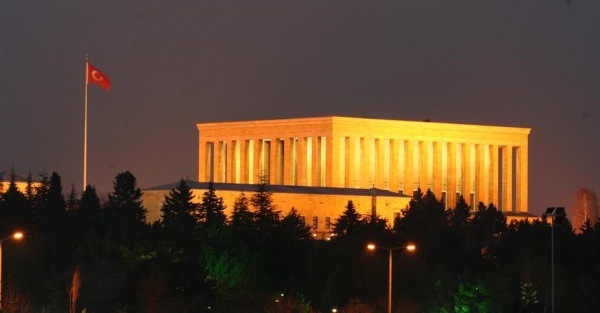
Continue to visit, The Museum of Anatolian Civilizations, close to the citadel gate, a 15th century Ottoman bedesten has been beautifully restored and since 1921 it houses a marvelous and unique collection including Paleolithic, Neolithic, Chalcolithic, Hatti, Hittite, Phrygian, Lydian, Urartian and Roman works. In 1997 this great museum won the "European Museum of the Year" award among 65 museums from 21 European countries.

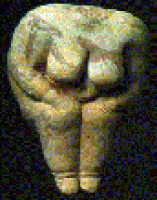
After lunch, drive to Cappadocia for the dinner and overnight.
Duration : 05h00-19h00
Meal Plan : Breakfast, Lunch & Dinner
Overnight : Cappadocia
|
Day 5 – Cappadocia |
After breakfast, start the visits with Goreme Valley museum consists of steep cliffs and many hidden churches dating from second half of 9th C.
Then visit Pasabag in Cappadocia is located on the road coming from Goreme. Highly remarkable earth pillars can be seen here, in the middle of a vineyard, hence the name of the place which means: the Pacha's vineyard. Pacha means General", the military rank, in Turkish and it is a very common nick name. This site is also called Monks Valley. The name was derived from some cones carved in tuff stones which stand apart. Currently, there is a vineyard and a number of tuff cones standing right next to the road.


Continue to visit the villages of Avanos, is a small town famous for its pottery. It is built along the banks of Kizilirmak (Hayls River), the longest river originated and ending within the borders of Turkey; 842 miles. Those who want may enjoy famous “testi kebab”. After lunch, visit traditional pottery making house where guests will see their own talents in producing their own potteries.
Then continue to visit one of the Underground City made to accommodate several thousands of people with seven subterranean floors. So far 36 underground cities have been discovered some of them being very recent. It is also estimated that most of them are connected to each other. But it is difficult to identify these connections.

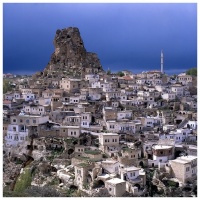
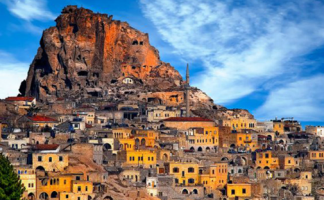
After lunch visit Cavusin village, a Greek town whose history goes back to the Early Christian Period. The rock cut buildings have collapsed because of erosion but the churches are still in place and being used as dovecotes.
Duration : 09h00-18h00
Meal Plan : Breakfast, Lunch & Dinner
Overnight : Cappadocia
|
Day 6 – Cappadocia / Konya / Pamukkale |
After breakfast, drive to Pamukkale. This drive will take around 8 - 10 hours
Duration : 06h00-20h00
Meal Plan : Breakfast, Lunch & Dinner
Overnight : Pamukkale
|
Day 7 – Pamukkale / Hierapolis / Ephesus / Virgin Mary - Overnight Kusadasi |
Pamukkale, translates as “COTTON CASTLE” as it seems as you approach across the valley where calcareous hot springs descending over hundred meters have created fascinating travertine in the form of white terraces and basins.
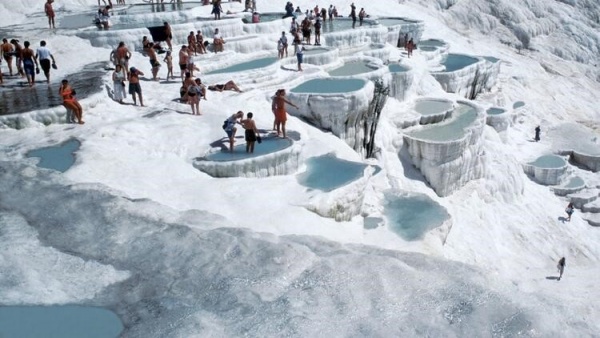
Morning visit the ancient city of Hierapolis, founded by Eumenes II in the 2nd century BC. Visit the theater and famous Necropolis which is the largest one in the Asia Minor.
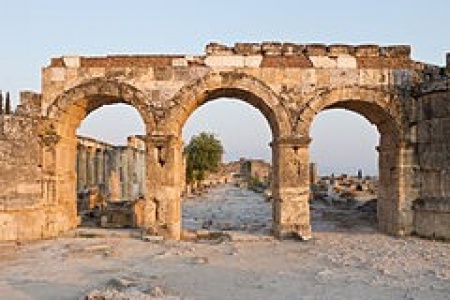
Continue to visit Ephesus, the Roman capital of Asia minor which remains to be the best preserved ancient city in the world. During the golden age of the Roman Empire (2nd century AD), Ephesus was an important commercial and cultural center. The protector of the city was Artemis, the Goddess whose temple was one of the “Seven Wonders of the Ancient World”. The Ephesians still worshipped Artemis when St. Paul came to the city to win converts. St. John brought Virgin Mary to Ephesus after the death of Jesus Christ and she lived until the age of 101 in a small house built for her on Mt. Koressos. Now, the popular place of pilgrimage for Catholics and Muslims, the house received the official sanction of the Vatican and a commemoration ceremony is held every year on August 15th. The third church council in 431 was held in the Basilica of Virgin Mary in Ephesus.

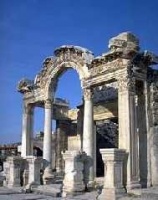

Continue to visit, the House of the Virgin where it's believed that she passed last years of her life and died. She came to Ephesus together with St. John and taken up to Panaghia Kapulu Mountain to survive the Roman persecutions. The House was destroyed by many earthquakes and not discovered until 1951 thanks to a German Nun Catherine Emmerich who saw its location in her visions. It is recognized as a shrine by Vatican. Now the House of Virgin Mary is renovated by George Quatman Foundation from Ohio and serves as a small church which attracts many Christians as well as Muslims coming to pray for her.
Duration : 07h00-20h00
Meal Plan : Breakfast, Lunch & Dinner
Overnight : Izmir
|
Day 8 – Kusadasi / Pergamum / Canakkale |
After breakfast drive to Pergamum, the capital of large and powerful pre-Roman Kingdom and one of the Seven Churches of Revelation. Visit Ascelpion known as the world’s first health center, a sanctuary to the God of Medicine, Asclepios!

Pergamum’s place in the religious history is also very important because of the paragraph addressed to its Christians by St. John in the Book of Revelation (Rev. 2:12-17). He characterized Pergamum as the place where Satan was enthroned.
At the end of the tour, drive to Canakkale, the base from where we visit Troy.
After the breakfast, departure to ancient Troy famous for the legendary Trojan Horse from the times of an equally legendary couple Helen & Paris. The remains of the city were excavated by Heinrich Schliemann, the pioneer in the field of archaeology, who used Homer’s Illiad to locate the site, and who also took many of the valuable treasures he found there back to Germany with him.

Duration : 08h00-20h00
Meal Plan : Breakfast, Lunch & Dinner
Overnight : Canakkale
|
Day 09 – Canakkale / Bursa / Istanbul |
After breakfast in the morning and drive to İstanbul via Bursa,which is teh first capital city of the Ottoman Empire.Bursa is know by its mosques, thermal Turkish Baths and its production of silk.Visit Grand mosque,Green Mosque of Bursa and museum.Visit silk bazaar and continue with lunch.After lunch drive to İstanbul arrive to your hotel in afternoon.
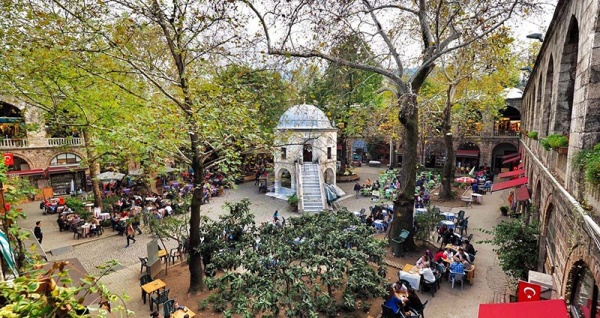
Duration : 09h00-15h00
Meal Plan : Breakfast
Overnight : Istanbul
|
Day 10 – Departure |
After breakfast, transfer to airport for your departure flight.

















